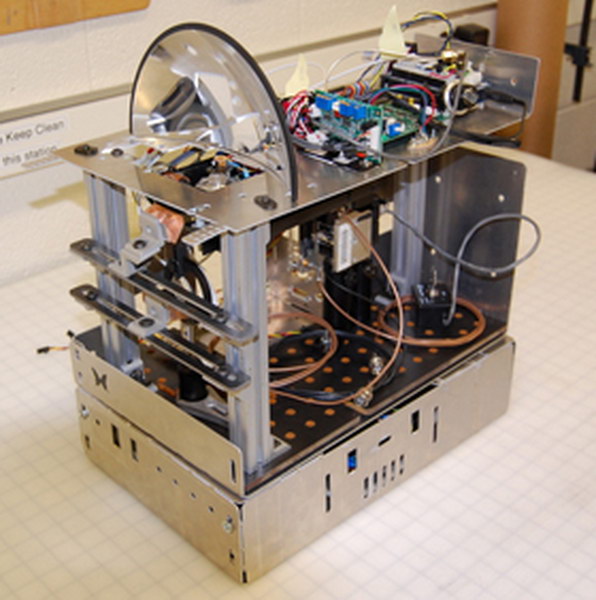Three researchers at Brigham Young University (BYU) published an article on February 3rd in the on-line version of the Review of Scientific Instruments titled “Frequency division color characterization apparatus for anisotropic leaky mode light modulators.” And why is this of interest to readers of Large Display Monitor? Because, according to Daniel E. Smalley, assistant professor of electrical engineering at BYU, the technology they describe can eventually lead to true holographic displays at affordable prices. Professor Smalley first worked on this technology while he was a graduate student working at MIT with his advisor V. Michael Bove.
Frequency multiplexing of color consists of coupling red, green, and blue light into waveguide and then coupling the colors out using surface acoustic waves with different frequencies.
One of the keys to a holographic 3D display is to control not only the intensity and color at a pixel but the angle and phase a light ray emerges from a pixel. And the pixels have to be tiny in a true holographic display, comparable to the wavelength of light.
The BYU design uses surface acoustic waves (SAW) generated in lithium niobate (LiNbO3) to control red, green and blue laser light passing through microscopic optical waveguides. Smalley says that large numbers of these SAW devices can be formed on a surface using semiconductor fabrication techniques. The team’s technology adapts and combines techniques from telecom and integrated optics in a way that makes it much less expensive than previous approaches. “We can use this technology to make simple and inexpensive color waveguide displays – including inexpensive holographic video displays,” Smalley pointed out. “This can drop the cost of a holographic video display from tens of thousands of dollars to less than a thousand.”

A holographic video monitor under construction at BYU. Credit: D. Smalley/BYU
A holographic video display would stack many of these waveguides alongside each other. Smalley says the waveguides can be spaced a few dozen microns apart. While this is much larger than the wavelength of visible light – green is about ½ micron – it is still down in the range where the interference effects required for true holographic displays occur. As everyone knows, the smallest achievable features have shrunk over time and are expected to continue to shrink in the future.
The researchers suggest they can manufacture a device that can display 50 billion pixels per second. This could provide 3D images at the same kind of resolutions and frame rates seen in standard-definition TV. Smalley said one of the major challenges will be to develop a computer powerful enough to provide all the data needed to generate holographic videos, which require data rates far higher than the data rates associated with normal video or even 4K stereoscopic video.
Smalley and his colleagues are not thinking small. They are working on ways to use their technology to create large holographic video displays – on the scale of room-sized displays. Don’t hold your breath, however, I believe we are talking years, or perhaps decades, before this or any other technology enables true holographic displays at prices anyone can afford. This technology does, however, show a path forward, something that has been lacking in previous discussions of holographic TV.
The complete Review of Scientific Instruments article can be viewed on-line Here. The American Institute of Physics popular explanation of the technology can be read Here. –Matthew Brennesholtz

